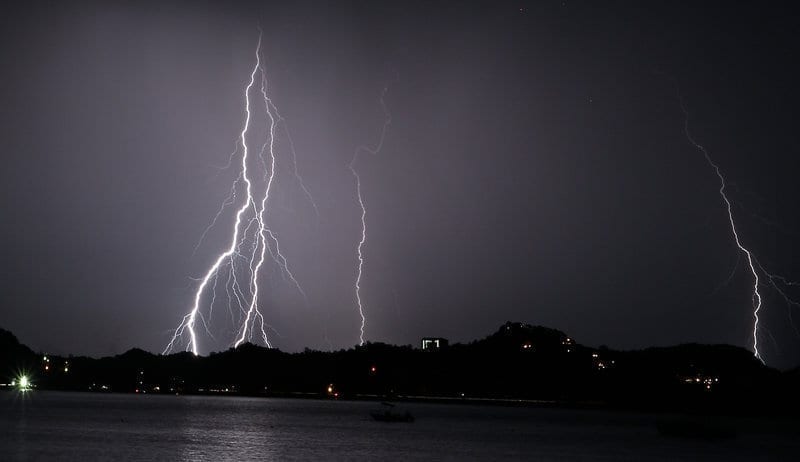If You Hear Thunder
Lightning and thunder are consistent elements of any tropical environment. Situated between 8 and 12 degrees north of the equator, Costa Rica is a premier stage for nature’s light shows and sonic displays. In fact, the country now ranks high among those with the most lightning strikes on the planet, a category dominated by locales in Venezuela and the Congo. Within Costa Rica, Guanacaste province is considered the lightning capital.
Now that Guanacaste’s rainy season is well underway, it’s time for some thunder and lightning fun facts. By way of introduction, lightning occurs as an electronic equalizer between vast pools of positively and negatively charged areas inside a thunderstorm, basically depolarizing this ionic battlefield.
Only about 20% of the lightning bolts in Costa Rica touch the ground.
- Lightning and thunder occur at the same time. But we see the lightning first because light travels much faster than sound.
- In the right conditions, thunder can be heard from a distance as far as 16 kilometers away. The deep, booming sound is caused by the rapid expansion of air surrounding the path of a lightning bolt. Rolling thunder occurs when lightning fragments into branches (tendrils) and when, on occasion, the main bolt returns to its cloud of origin after making contact with the ground.
- Eighty percent of all lightning bolts occur within cloud formations and do not touch ground. That is most often the case with lightning charges during daylight hours, which cannot be detected by the human eye.
- Instituto Costarricense de Electricidad (ICE) established the Atmospheric Discharges Detection Network in 2006. Since then, the most electrically-charged day on record was April 27, 2012, when more than 20,000 separate occurrences were detected in Costa Rica. More than 6,00 of these were recorded in Guanacaste.
- At the point of contact, a lightning bolt has a circumference slightly larger than that of a pencil. The core of air inside a vein of lightning has been estimated to be 30,000 degrees Celsius (54,000 degrees Fahrenheit) — about six times hotter than the surface of the sun.
- The months of May, August and September account for more than half of the thunderstorms in Costa Rica.
- The primary forms of lightning discharges are cloud-to-cloud, cloud-to-air and cloud-to-ground. Only about 20% of the lightning bolts in Costa Rica touch ground.
- When seeking shelter during an electrical storm, do NOT go under a tree or into a doorway. These two locations are favored destinations for lightning to touch down. If possible, get inside a car because the rubber wheels make the vehicle grounded and neutral, and therefore not vulnerable to a lightning strike.
- Surfers out on the ocean are open targets for a lightning bolt. Contrary to popular folklore, lightning DOES strike the ocean, radiating horizontally across the surface. The best precaution is to get out of the water, stay as low on the beach as you can and seek overhead protection as quickly as possible.
The microclimates in Guanacaste produce amazing events on nature’s palette, both visually and aurally. It is possible to stand in direct sunlight in Tamarindo and simultaneously be in the audience of lightning and thunder, while actually hearing the downpour in Villarreal, a scant five kilometers away.
Thunderstorms over the Pacific Ocean at sunset are some of the most stunning and memorable one can see anywhere on the planet. It serves to remind us that there is something much bigger than the human race on this planet. She does whatever she wants.


